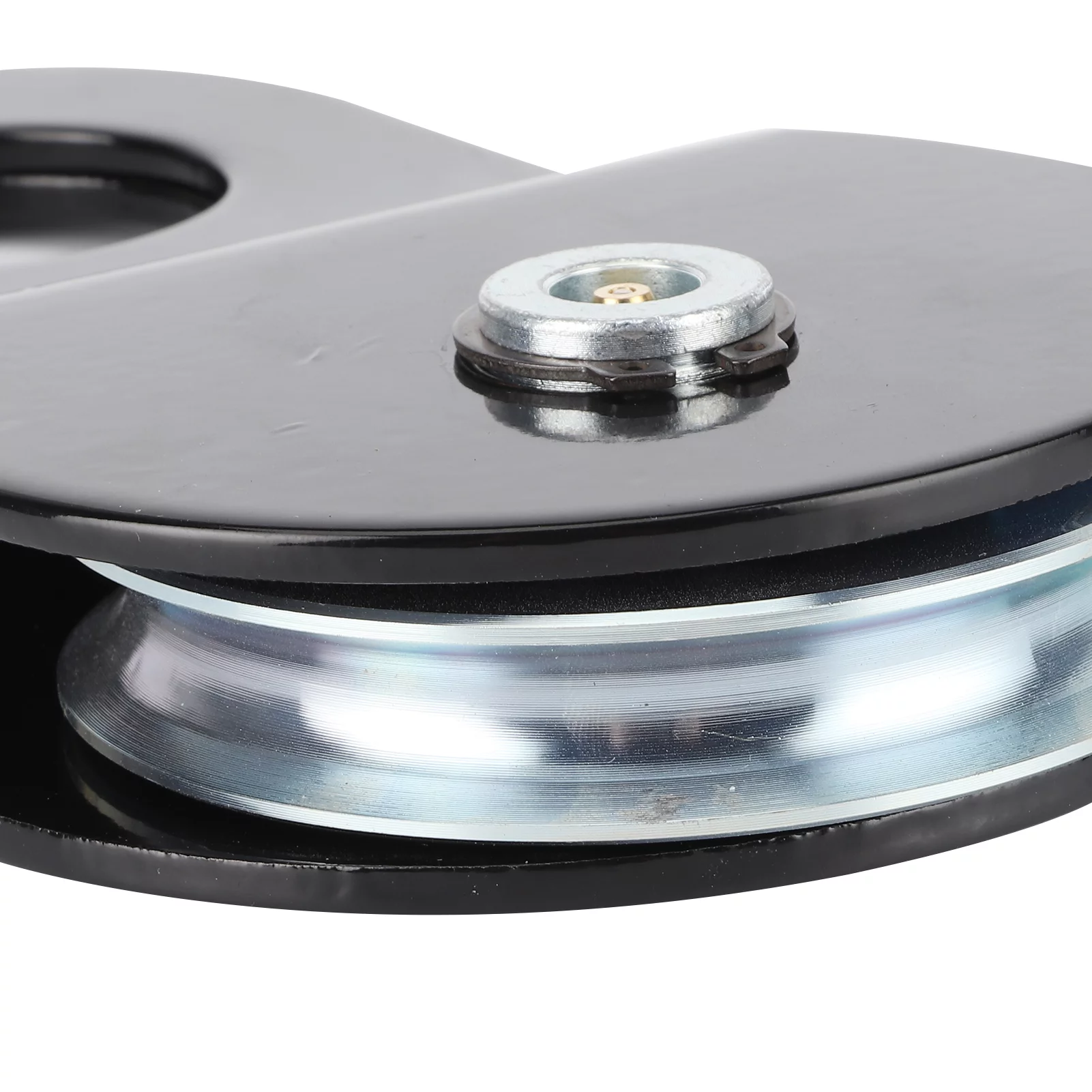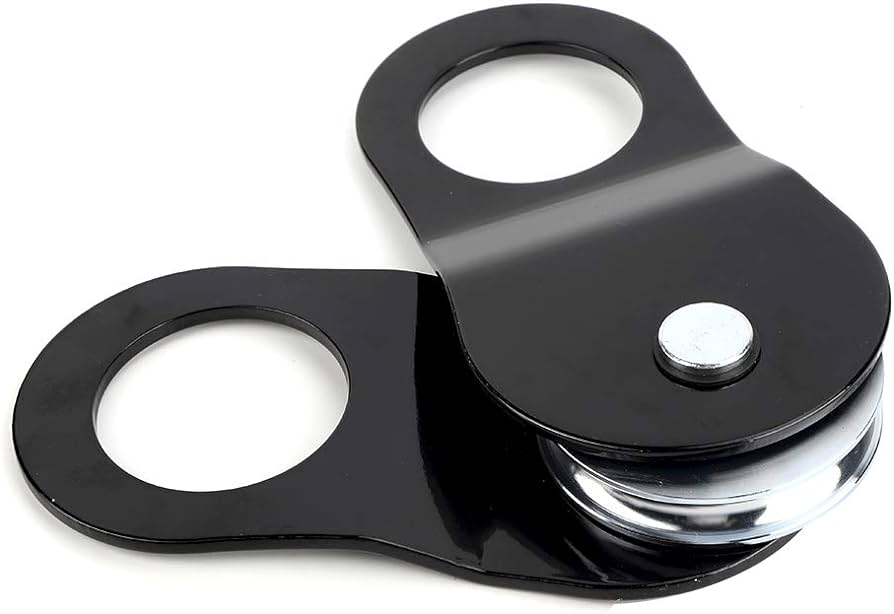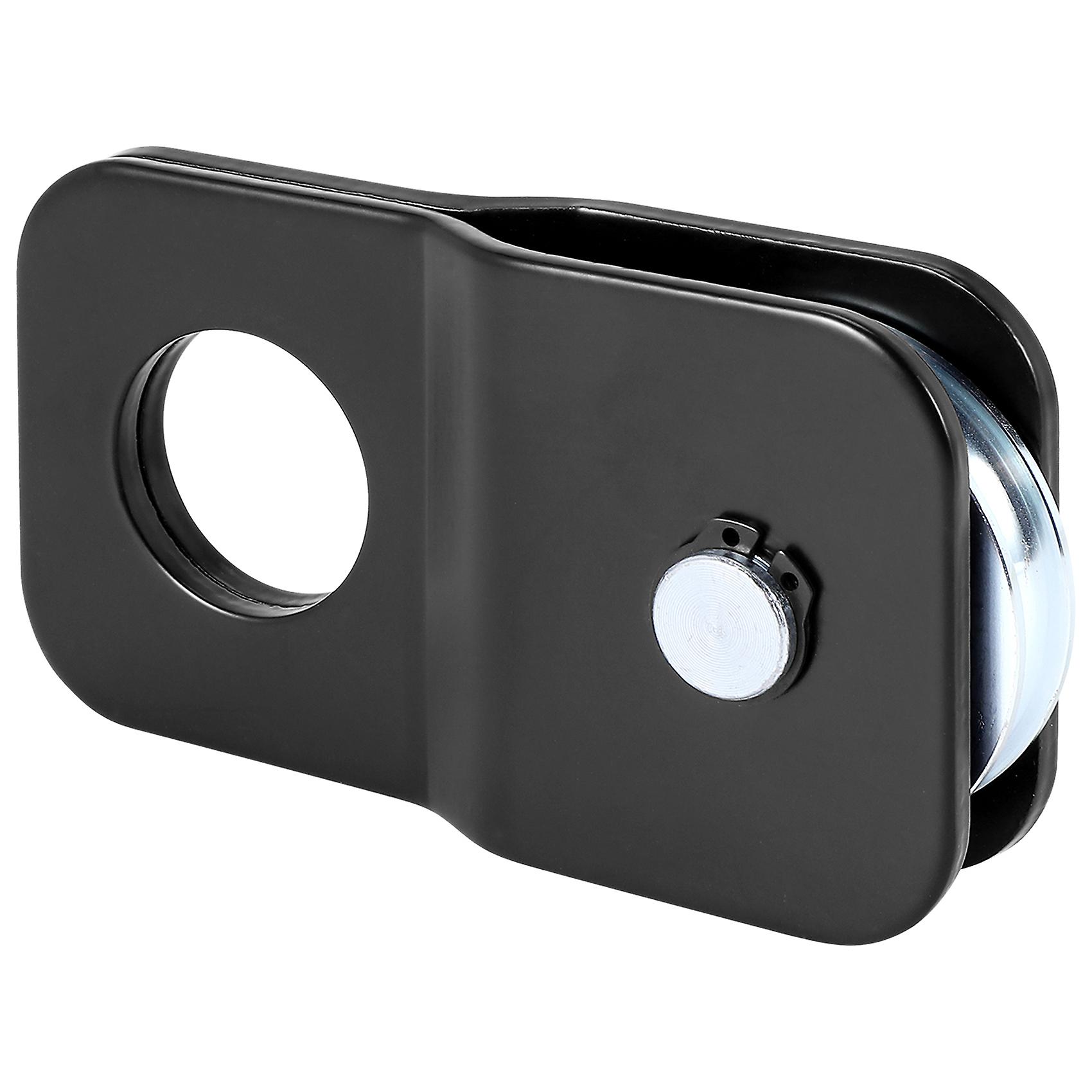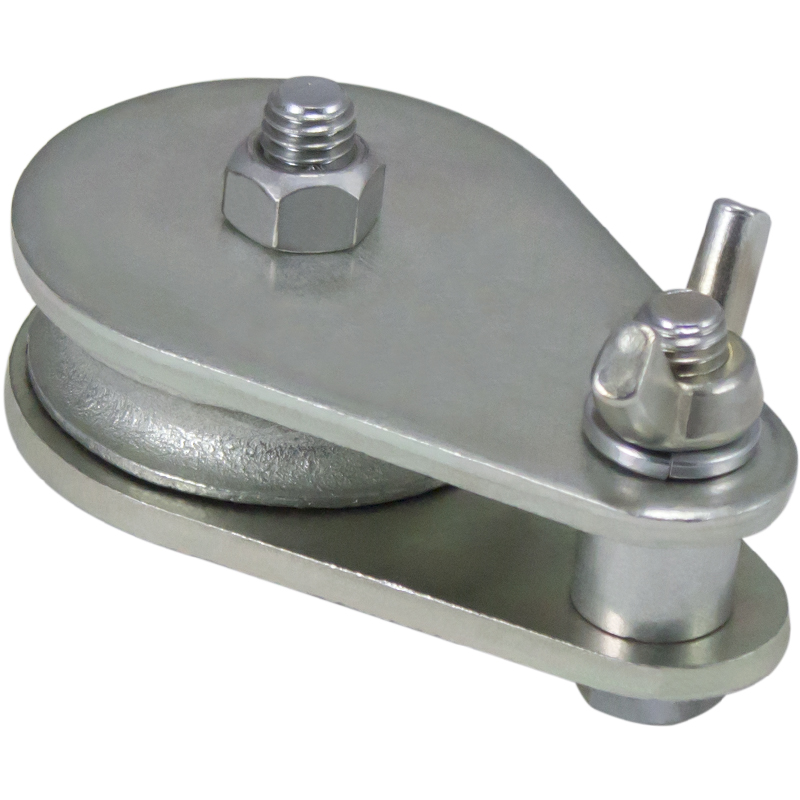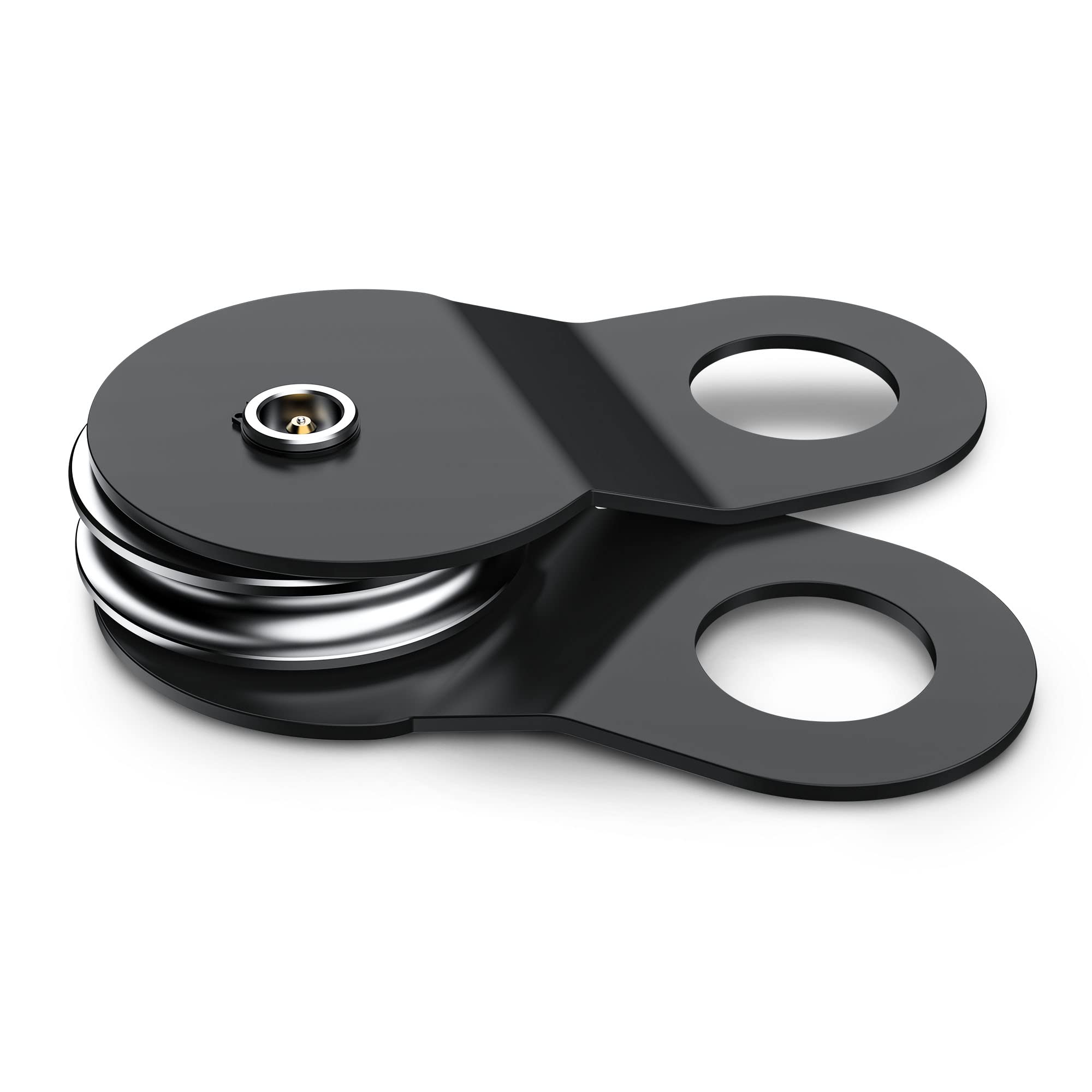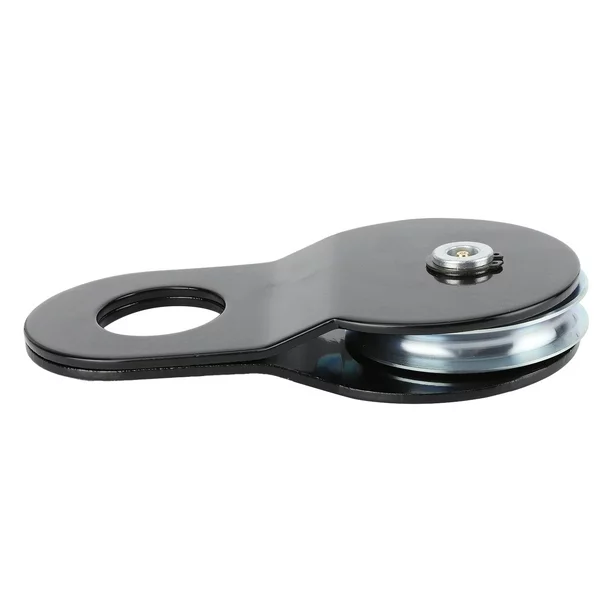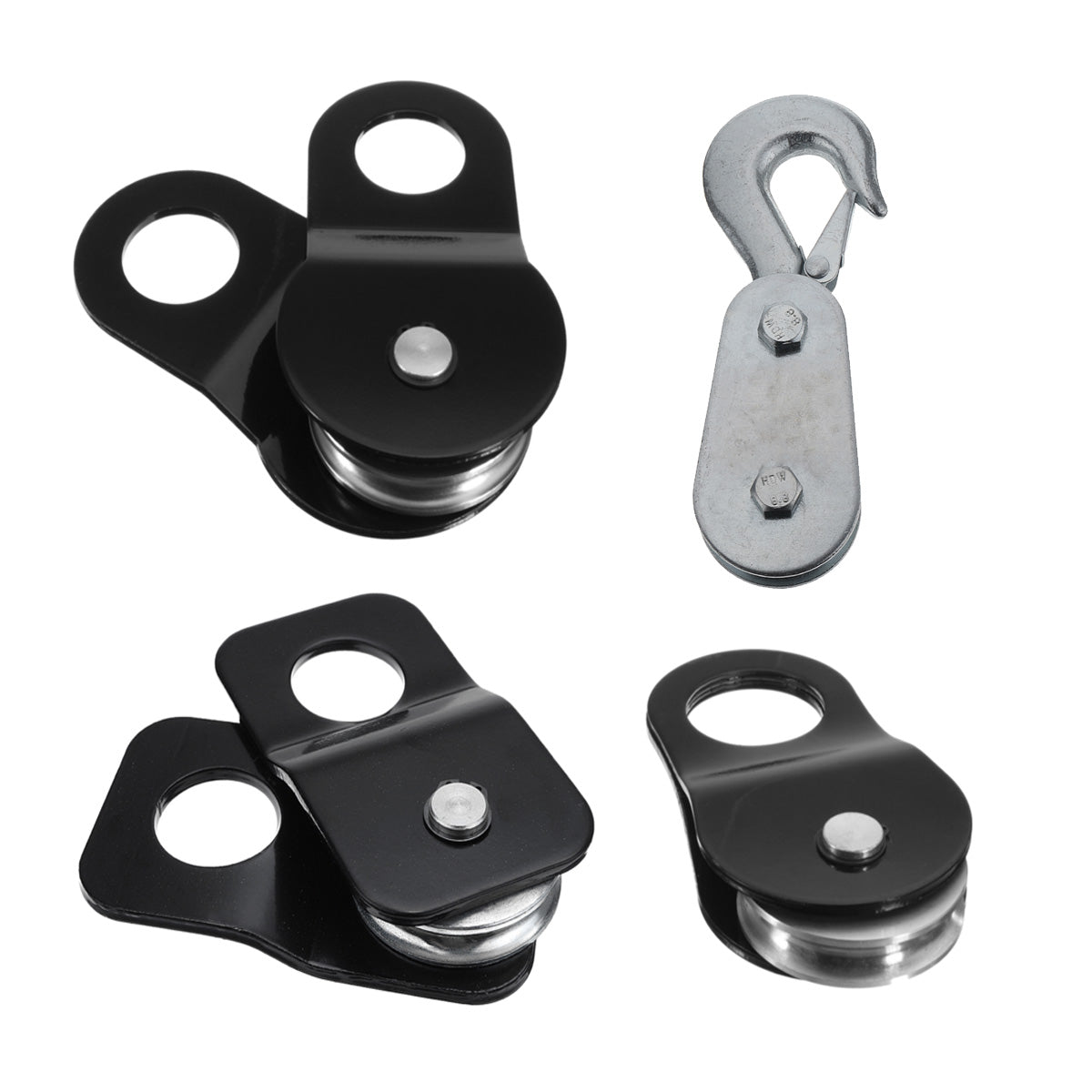Product Description
Spare Parts Casting Sheave Pulley for Large Mining Lifting Machinery
Product Introduction:
Xihu (West Lake) Dis. wheel device can transport the whole under the premise of swimming round and fixed wheel adopts integral cast joint structure, wheel hub, wheel rim for cast steel materials, spoke for the channel steel, after welding the whole annealing process again.
Considering the replacement bearing maintenance convenient, leave replace bearing remove space, guide wheel device structure adopted eccentric layout.
Xihu (West Lake) Dis. shaft using middle carbon alloy steel forging whole, adopting the structure of the cast joint pulley, equipped with PVC or nylon liner, protect the wire rope.
Imported or domestic spherical roller bearings, also can install bearing temperature measuring element.
In order to prolong the service life of wire rope, rim inside wedge liner with wear-resisting, withstand voltage, using D660 (1571) or nylon liner.
1) eccentric layout: on 1 side of a winding wheel have replaced bearing dismantling space, can not remove the pulley mechanism, only for bearing maintenance and replacement.
2) symmetry layout: relative with 4 wheels on both sides of the 2 bearing seat is symmetrical, but need to replace the bearing shell, only to remove the pulley mechanism.
sheave pulley and the common malfunction and technical guide wheel
1) to the problem of old structure pulley sliding bearing to burn tile should improve lubrication way; Because of the pulley is installed on the derrick, daily maintenance inconvenience, should add temperature alarm device, so as to timely maintenance to prevent the tile burning failure, or the original sliding bearing replacement into rolling bearing structure
2) for old structure pulley rope groove without liner, can no longer add padding on the original rope groove, need to change a gasketed pulley, adjacent assembly size can remain motionless, and installation
3) for mountain transportation difficulties or have some difficulties in roadway transportation in underground mine, the pulley is (guide wheel) change the structure into 2 or 4 and a half of head sheave.
Mine hoist sheave specification:
| Material | Q235B,Q345B,35#,45# |
| Heat treatment | Hardening and tempering, high frequency quenching, carburizing quenching and so on |
| Groove surface quench | HRC45-55 |
| Groove surface quench depth | ≥2mm |
| Processing diameter scope | 1600~5000mm |
Our services:
1>.Pre-sale services: enthusiasm
We provide you with the prophase plan, process flow design and manufacturer equipment according to your special demand.
2>.Sale services: servant
Send technicians to the jobsite for guiding the installation and adjustment, training operators and finishing the check and accept together with you.
3>.After-sale services: faithfulness
To establish long term friendship, we will regularly pay return visit to customers.
Supplying technique, building design, instruction, installation and debugging for free.
4>.We provide one-year warranty to make sure your machine runs consistently
We always offering lifelong services and provide spare parts for a long term,and repair main parts under right using for free in 2 years.
About us
CITICHL is national major industry and heavy machinery manufacturing base in the middle of china, we can supply the customers with important complete technical equipments in mining, non-ferrous metal, chemical industry, metallurgy, construction materials, environment protection, and power generating as well as other basic industries. Our products are sold well to countries and regions in Asia, Africa, Europe, and Australia, and hold a large market share home and abroad.
We also supply all kinds of crushing equipments, vibrating feeder, vibrating screen, rod mil, stone washer, belt conveyor, screw classifier, flotation machine, magnetic ore separator, shaving table, spiral chute, rotary kiln, rotary dryer, mine hoist , ect. If you have any interest in our products, pls kindly contact us by the upper information with no hesitation.
| Type: | Electric Winch |
|---|---|
| Driven Type: | AC |
| Speed: | Fast |
| Carrying Capacity: | Weight Level |
| Tonnage: | 10T |
| Reel Number: | 1/2 |
| Customization: |
Available
| Customized Request |
|---|
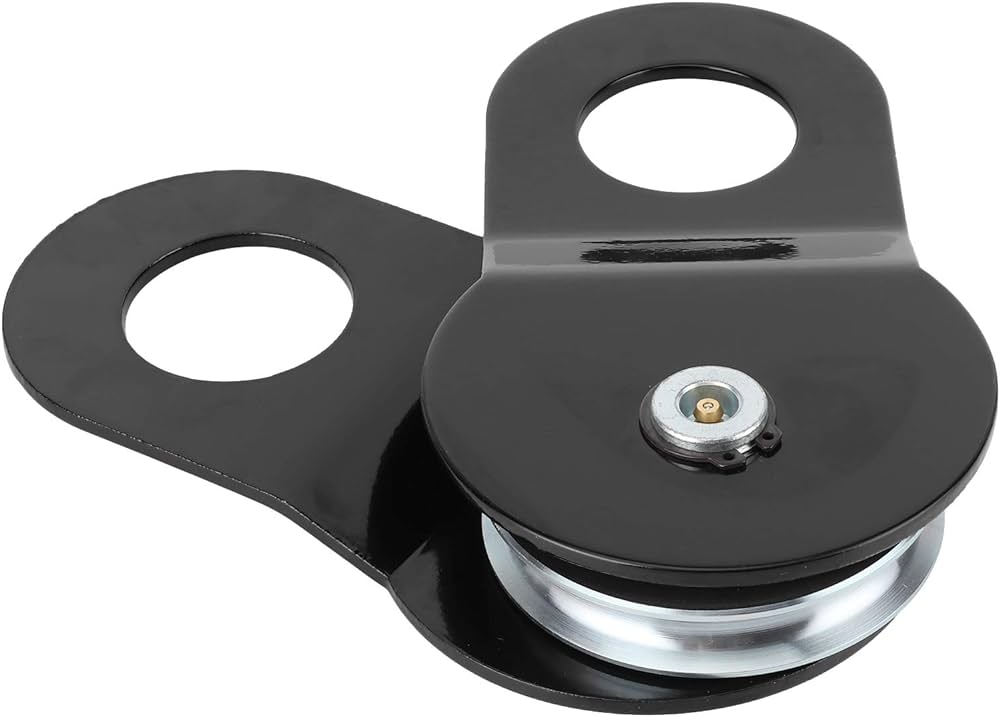
How are winch pulleys adapted for specialized applications in agriculture?
Winch pulleys can be adapted for specialized applications in agriculture to meet the unique needs and requirements of the industry. Here is a detailed explanation:
In agriculture, winch pulleys are often utilized for various tasks, including lifting heavy loads, moving equipment, and facilitating efficient operations. To cater to the specific demands of agricultural applications, winch pulleys undergo certain adaptations and modifications, which are outlined below:
- Increased Load Capacity: Agricultural activities often involve handling heavy loads, such as bales of hay, equipment, or livestock. Winch pulleys adapted for agriculture are designed with increased load capacities to handle these substantial weights. They are constructed using durable materials and incorporate robust mechanisms to ensure reliable performance and the ability to lift or pull heavy loads in agricultural settings.
- Corrosion Resistance: Agricultural environments can be harsh, with exposure to moisture, chemicals, and other corrosive substances. To withstand these conditions, winch pulleys for agriculture are often constructed with corrosion-resistant materials, such as stainless steel or coated surfaces. This adaptation helps protect the pulleys from rust and corrosion, ensuring their longevity and reliable operation in agricultural applications.
- Weatherproofing: Agriculture involves working outdoors, exposing winch pulleys to various weather conditions. Specialized winch pulleys for agriculture may incorporate weatherproofing features, such as sealed bearings, gaskets, or protective coatings. These adaptations help prevent water, dust, and debris from entering the pulley mechanisms, maintaining their functionality and preventing damage due to environmental factors.
- Mounting Options: Agricultural machinery and equipment often require winch pulleys to be mounted in specific locations or configurations. Adapted winch pulleys for agricultural applications may offer various mounting options, such as different bracket designs or versatile attachment mechanisms. This allows farmers and workers to install the winch pulleys conveniently on their equipment, optimizing their usage and compatibility with agricultural machinery.
- Speed and Control: Certain agricultural tasks require precise control over the speed and movement of loads. Winch pulleys adapted for agriculture may feature adjustable speed settings or control mechanisms, allowing operators to regulate the pulling or lifting speed according to their specific needs. This adaptation enables farmers to perform delicate operations, such as controlled feeding or positioning of equipment, with increased accuracy and efficiency.
- Remote Control Capabilities: In large-scale agricultural operations, the ability to control winch pulleys remotely can significantly enhance productivity and convenience. Adapted winch pulleys in agriculture may incorporate remote control systems, enabling operators to operate the pulleys from a distance. This adaptation simplifies operations, particularly when handling heavy loads or performing tasks in challenging or hazardous agricultural environments.
- Integration with Agricultural Machinery: Winch pulleys can be adapted and integrated into specific agricultural machinery and equipment to streamline operations. For example, they can be incorporated into tractor-mounted systems, loaders, or other specialized agricultural machinery. This adaptation ensures seamless compatibility and efficient utilization of winch pulleys within the agricultural context.
The adaptations mentioned above demonstrate how winch pulleys are modified and tailored to meet the specialized requirements of agricultural applications. By incorporating increased load capacity, corrosion resistance, weatherproofing, versatile mounting options, speed and control features, remote control capabilities, and integration with agricultural machinery, winch pulleys become valuable tools in various agricultural tasks, contributing to increased efficiency, productivity, and convenience in farming operations.

What role do winch pulleys play in off-road vehicles and recovery operations?
Winch pulleys play a crucial role in off-road vehicles and recovery operations. Here is a detailed explanation:
In off-road vehicles and recovery operations, winch pulleys serve multiple vital functions that contribute to safe and effective vehicle recovery and extraction. Here are the key roles that winch pulleys play in these scenarios:
- Increased Pulling Power: Winch pulleys provide a mechanical advantage that allows off-road vehicles to exert greater pulling power. By rerouting the winch cable through the pulley system, the applied force can be multiplied, enabling the vehicle to overcome obstacles or extract itself from challenging situations. This increased pulling power is particularly valuable in off-road environments where vehicles may get stuck in mud, sand, or uneven terrain.
- Change of Direction: Winch pulleys allow for changes in the direction of the pulling force. In recovery operations, this is crucial for maneuvering the vehicle out of difficult positions. By using winch pulleys strategically, the pulling force can be redirected to achieve optimal angles for extracting the vehicle. This flexibility in changing the direction of the force enhances the recovery process and helps overcome obstacles that may obstruct a direct extraction.
- Load Sharing: Winch pulleys enable load sharing between multiple anchor points. In off-road recovery situations, there may be limited or unstable anchor points available. By using winch pulleys to distribute the load across multiple anchor points, the force can be evenly distributed, reducing strain on any single point and minimizing the risk of anchor failure. This load sharing capability enhances safety and increases the likelihood of successful vehicle recovery.
- Winching from Different Angles: Winch pulleys facilitate winching from different angles. In off-road recovery scenarios, the ideal angle for winching may not always be directly aligned with the anchor point. Winch pulleys allow for the winch cable to be redirected, enabling winching from various angles and improving the efficiency of the recovery operation. This versatility is essential when dealing with complex recovery situations or when maneuvering the vehicle around obstacles.
- Controlled Load Movement: Winch pulleys offer precise control over the movement of the load during recovery operations. By utilizing the pulley system, operators can regulate the tension and speed of the winch cable, ensuring controlled and gradual movement of the vehicle. This control minimizes the risk of sudden jolts or jerks that could damage the vehicle or compromise the safety of the recovery operation.
- Increased Safety: Winch pulleys enhance safety in off-road vehicles and recovery operations. By providing increased pulling power, changing the direction of the force, and facilitating load sharing, winch pulleys help prevent excessive strain on the winch system, the vehicle, and the recovery equipment. This reduces the risk of equipment failure, accidents, and injuries during the recovery process. Additionally, winch pulleys allow operators to maintain a safe distance from the vehicle during recovery, minimizing the risk of injury from sudden movements or equipment failure.
The roles played by winch pulleys in off-road vehicles and recovery operations, including increased pulling power, change of direction, load sharing, winching from different angles, controlled load movement, and increased safety, make them indispensable tools for off-road enthusiasts and recovery professionals. Winch pulleys significantly enhance the capabilities and effectiveness of winch systems, helping to safely extract stuck or immobilized vehicles and navigate challenging off-road environments.

What is a winch pulley, and how is it used in winching systems?
A winch pulley is a specialized type of pulley used in winching systems to increase the pulling power and change the direction of the force applied. Here is a detailed explanation of what a winch pulley is and how it is used in winching systems:
A winch pulley, also known as a snatch block or a pulley block, is a device that consists of a grooved wheel or sheave mounted on a frame or housing. The sheave has a V-shaped groove or multiple grooves that guide the winch cable or rope. The frame of the pulley block typically includes a hook or an attachment point for connecting to an anchor or a load.
In winching systems, a winch pulley is used to increase the pulling power and change the direction of the force exerted by the winch. When the winch cable or rope passes through the grooved sheave of the pulley block, it changes the line of pull and multiplies the pulling force. This mechanical advantage allows the winch to exert greater force, making it easier to move or lift heavy loads.
The primary purpose of using a winch pulley in a winching system is to achieve a higher pulling capacity than what the winch alone can provide. By redirecting the cable or rope through the pulley block, the load can be distributed over two or more lines, effectively reducing the strain on the winch and increasing the overall pulling capacity. This is particularly useful in situations where the load is exceptionally heavy or when additional pulling power is required.
Furthermore, a winch pulley can be used to change the direction of the pulling force. By attaching the pulley block to an anchor or a fixed point and routing the cable or rope through the sheave, the winch can pull the load from a different angle. This versatility allows for more efficient and controlled winching operations, especially in situations where a direct line of pull is not possible or when the load needs to be guided around obstacles.
Winch pulleys are designed to be strong, durable, and able to withstand the high forces and loads encountered in winching operations. They are commonly made from robust materials such as steel or high-strength alloys to ensure reliability and safety during heavy-duty applications.
In summary, a winch pulley is a specialized pulley used in winching systems to increase pulling power and change the direction of the force applied. It provides a mechanical advantage by redistributing the load and multiplying the pulling force, making it easier to move heavy loads and navigate challenging winching scenarios.


editor by CX
2023-11-27
